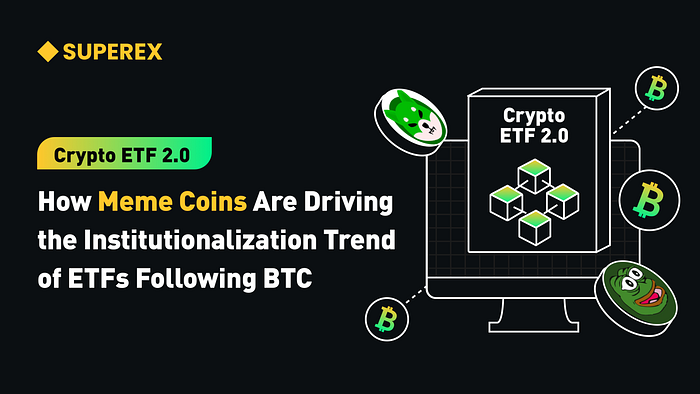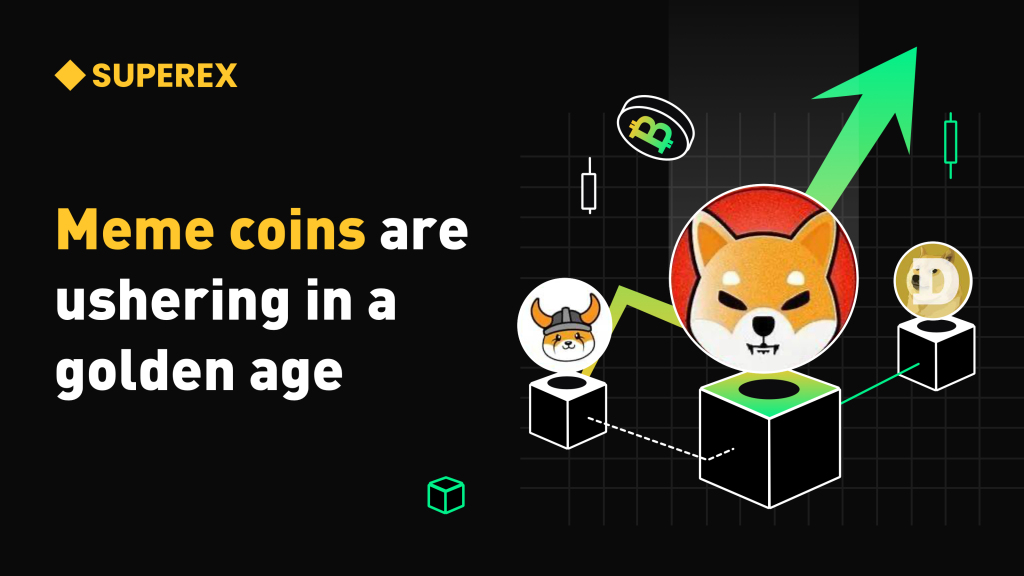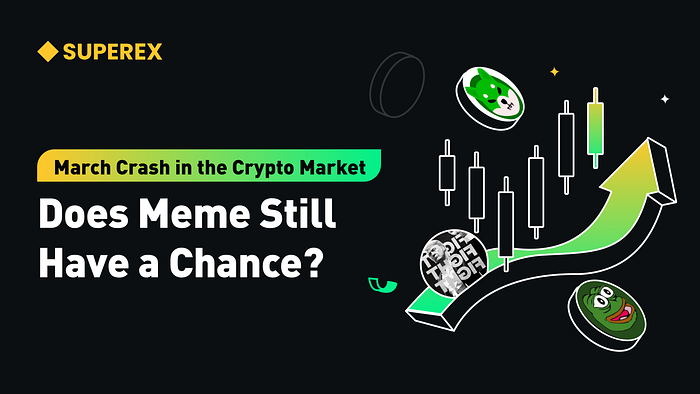Crypto ETF 2.0: How Meme Coins Are Driving the Institutionalization Trend of ETFs Following BTC

#Crypto #ETF #BTC
In previous articles, we analyzed that although the first White House cryptocurrency meeting hosted by Trump received mixed reviews, a series of actions since he took office — ranging from signing the national cryptocurrency reserve order to holding the White House crypto meeting, and the upcoming SEC cryptocurrency conference — clearly demonstrate the U.S. government’s increasing focus on cryptocurrency.
Policy direction has always been the best indicator for traditional finance. Since Trump announced the establishment of a national cryptocurrency reserve, traditional financial institutions have actively advanced altcoin ETF applications. Starting in February, the SEC has successively acknowledged applications from major U.S. financial giants for ETFs related to $LTC, $DOGE, $SOL, and $XRP. With favorable policy shifts and regulatory easing from the SEC, progress on altcoin ETFs has been accelerating, raising expectations of increased institutional investment and enhanced market liquidity.
Against this backdrop, the wave of Crypto ETF 2.0 is gradually taking shape. Following Bitcoin and Ethereum spot ETFs, a surge in ETF applications featuring Meme coins (led by DOGE) as well as $SOL and $XRP signals a new phase of institutional adoption in the crypto market.
This article will explore how Meme coins are driving the institutionalization of ETFs from three key perspectives:
- Enhancing Market Liquidity
- Reshaping the Regulatory Narrative
- Fundamentally Transforming Market Structure
- Click to register SuperEx
- Click to download the SuperEx APP
- Click to enter SuperEx CMC
- Click to enter SuperEx DAO Academy — Space

Meme Coin ETFs: From “Retail Frenzy” to Institutional Investment Tools
As a standardized financial product, ETFs offer a key advantage: consolidating a fragmented spot market into a centralized trading platform. Traditionally, Meme coins like DOGE and SHIB have been considered retail-driven speculative assets, characterized by extreme volatility and relatively lower liquidity, making them susceptible to wild market swings driven by investor sentiment.
However, the introduction of ETF products has infused these assets with institutional-grade liquidity, leading to several significant changes:
1. Liquidity Upgrade and Volatility Suppression
- Arbitrage Mechanisms Stabilizing Market Prices:
Once the DOGE ETF is approved, market makers can use arbitrage strategies to hedge price fluctuations, significantly reducing the historical volatility of Meme coins.If the Doge ETF is approved, Based on current market data, DOGE’s 30-day historical volatility is expected to drop from over 120% to around 60%–80%, a level comparable to Bitcoin’s market behavior post-ETF launch. More stable price movements benefit institutional investors in risk management while also providing a more rational trading environment for retail investors. - AUM Growth Effect Creating Buying Support:
Drawing from the experience of Bitcoin ETFs, if a DOGE ETF attracts 1% of its total market capitalization in assets under management (AUM) (approximately $300 million), this would cover around 5% of DOGE’s current market cap. As a result, ETF products would not only introduce stable capital inflows but also establish a sustained buying force, further reinforcing market stability and liquidity. - The Standardization Advantage of ETF Trading Mechanisms:
ETFs operate on fixed trading hours and mature trading frameworks, allowing market participants to trade in a transparent and regulated environment. This standardized mechanism reduces operational risks, enhances trading efficiency, and improves institutional recognition of Meme coins. As these mechanisms continue to evolve, more institutional capital is expected to enter the Meme coin market through ETFs and other derivatives, fostering a more mature and stable trading environment.
2. Reconstructing the Compliance Narrative
This is the most crucial aspect for the Meme coin market and an important pathway for compliance and narrative value that the sector has been actively exploring. Meme coins have long been labeled as “joke coins”, with mixed market perceptions. However, with the introduction of ETF products, Meme coins — represented by DOGE, which has made significant progress in compliance — are undergoing a transformation from a retail-driven phenomenon to institutional-grade financial instruments:
- Repositioning the Narrative and Brand Image:
Meme coins, with DOGE as a benchmark, are gradually evolving from pure speculative assets into “digital cultural assets.” With over 4 million holders and backing from influential figures like Elon Musk, DOGE stands out as an example of a Meme coin with increasing legitimacy. ETF issuers are strengthening this compliance-oriented narrative by integrating regulated custodians (e.g., Coinbase Custody) and on-chain transparency tools (e.g., real-time portfolio audits), significantly weakening the “high-risk” perception of Meme coins. This shift in narrative not only attracts institutional investors but also provides more conservative investors with confidence, thereby expanding market participation. - Yield Enhancement and Innovative Mechanisms:
Some financial institutions are exploring the integration of “community incentive pools” into DOGE ETFs. This could involve rebating a portion of management fees to holders or implementing on-chain governance voting to determine fund allocation. Such innovations could give rise to a new class of “yield-enhanced ETFs”, which not only offer direct financial incentives to token holders but also increase market activity and long-term value. The growing investor interest in these innovative ETF models may push traditional financial institutions to reassess the investment potential and compliance prospects of Meme coins. - Cross-Market Compliance Synergy:
If the SEC approves ETFs for multiple crypto assets, including $LTC, $SOL, and $XRP, it will contribute to a more structured regulatory framework. The launch of Meme coin ETFs would encourage regulators to further refine compliance guidelines within the existing framework, providing a stronger regulatory foundation for the entire crypto market. The cross-asset compliance effect means that Meme coins will no longer rely solely on hype and community sentiment but will instead gain a legitimate position in diversified crypto investment portfolios through compliant product design and institutional management.
3. Deep Structural Transformation of the Market
- Multi-Tier Investor Segmentation:
The traditional Meme coin market has long been dominated by retail investors, characterized by fragmented and sentiment-driven trading behavior. However, with the emergence of ETFs, the market is now segmented into two distinct layers:
- Retail investors dominate the spot market, maintaining Meme coins’ grassroots appeal.
- Institutional investors dominate the derivatives market, leveraging ETF-based financial instruments for structured trading.
For instance, DOGE ETF options contracts are expected to become an essential hedging tool for hedge funds, while market makers will stabilize prices through futures-spot arbitrage. This layered structure improves overall market efficiency, making the price discovery process more rational and transparent.
- Cross-Asset Correlation and Portfolio Optimization
Market data suggests that as Meme coin ETFs continue to gain traction, the 90-day correlation between DOGE and BTC is projected to rise from 0.3 in 2024 to 0.6 in 2025. This reflects an increasing institutional interest in incorporating Meme coins into diversified crypto portfolios to hedge risks and seize new market opportunities.
Stronger cross-asset correlation will drive the optimization of the broader crypto market structure, fostering closer synergies between different asset classes. This will help create a risk-managed, yield-stable investment ecosystem that appeals to institutional investors.
- Technological Innovation Drives Product Upgrades:
With continuous advancements in blockchain technology and enhanced data transparency, ETF products are also undergoing technological upgrades. The application of technologies such as smart contract custody, on-chain auditing, and distributed ledger systems has significantly improved the compliance, transparency, and security of ETF products. This not only reduces operational risks but also introduces a new regulatory experience to the entire market. Technological innovation will be a key driving force in transforming ETF products from quantitative changes to qualitative breakthroughs, laying the technical foundation for Meme coins to evolve from speculative tools for retail investors into institutional-grade assets.
Industry Experts’ Insights and Market Predictions
Regarding the future development of Crypto ETF 2.0, industry experts generally believe that as the regulatory landscape becomes clearer and technological innovation continues to advance, the crypto market is undergoing an unprecedented transformation. Market analysts point out that while Meme coins originated from internet culture and entertainment effects, their large community base and liquidity advantages are gradually translating into long-term value. Driven by institutionalization, Meme coins are not only emerging as effective tools for hedging market risks but are also becoming an essential component of asset allocation.
Moreover, market research institutions remain highly optimistic about the crypto ETF market in the coming years. According to the latest forecasts, within the next two years, as more token-based ETFs get listed, the overall liquidity of the crypto market is expected to increase by over 30%. Additionally, the growing correlation between Meme coins and Bitcoin will contribute to a more stable asset allocation structure.
Experts emphasize that investors should focus on risk diversification, maintain a rational perspective on short-term fluctuations, and adopt a long-term value investment strategy to better seize the market opportunities presented by institutionalization.
Summary
The institutionalization of Meme coin ETFs is not just about product innovation but also marks a critical convergence between the crypto market and traditional finance. Its long-term implications may include:
- Redefinition of Asset Classes: Meme coins, along with NFTs and social tokens, may form a new category of “cultural financial assets,” attracting institutional investors from the entertainment and sports industries.
- Regulatory Paradigm Shift: The SEC may introduce a “tiered regulatory framework,” applying strict scrutiny to mainstream assets like BTC and ETH while adopting a “light-touch” approach toward Meme coins to balance innovation and risk.
- Global Competitive Landscape: If regions such as Hong Kong and Singapore take the lead in approving Meme coin ETFs, it may pressure the U.S. to accelerate its approval process, triggering regulatory arbitrage-driven global capital flows.
In the era of Crypto ETF 2.0, Meme coins are transitioning from a “grassroots frenzy” to an “institutional asset allocation tool.” While this signifies market maturation, it also carries the risk of excessive financialization of narratives. Only by striking a balance between regulatory inclusiveness, technological reliability, and community autonomy can this trend truly drive the crypto industry into the next decade.







Responses